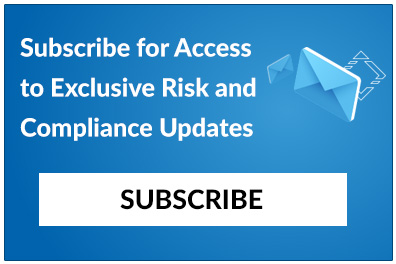Home/ Blog / How to Stay Ahead: Proactive Strategies for an Uncertain Regulatory Environment
As we progress through 2025, banks and financial institutions must navigate an environment marked by unprecedented regulatory uncertainty. The convergence of unpredictability, growing regulatory fragmentation, and rise in litigation risks are placing immense pressure on compliance frameworks that were once adequate but are now quickly becoming obsolete.
Major shifts in judicial interpretation, most notably the Supreme Court’s rollback of the Chevron doctrine, have diminished the traditional deference given to regulatory agencies, resulting in increased scrutiny of agency rulemaking and a rise in legal challenges. Simultaneously, interagency coordination has weakened, resulting in a patchwork of conflicting guidance, particularly in critical areas such as capital standards and mergers.
In this volatile landscape, reactive compliance is no longer sufficient. Forward-thinking financial institutions must adopt a proactive, intelligence-driven approach to managing regulatory changes such as AI-powered RCM software. By anticipating regulatory shifts, leveraging advanced technologies, and engaging with governing bodies, businesses can build resilience, maintain compliance, and stay ahead in an era of regulatory flux.
Navigating Legal Volatility and Regulatory Fragmentation in 2025
Judicial Deference Is Weakening
A pivotal development driving uncertainty is the Supreme Court’s decision to overturn the Chevron doctrine. For decades, courts deferred to reasonable agency interpretations of ambiguous federal statutes, granting regulators significant authority in shaping complex rules. With Chevron now dismantled, agencies no longer enjoy the same level of autonomy. Their rules are subject to far greater scrutiny, and legal challenges have become more frequent.
This shift creates uncertainty over the finality and stability of new regulations. Financial institutions can no longer assume that once a rule is issued, it will survive legal review unscathed. The new legal environment requires compliance teams to remain closely attuned to court rulings and prepare for potential disruptions at every stage. For that, organizations should adopt AI-powered RCM software to track all the evolving regulations.
Litigation Is Delaying Rule Finality
Compounding the impact of weakened judicial deference is the growing trend of litigation. Banks and financial institutions are increasingly challenging new regulations in court, particularly those perceived as burdensome or unclear. Cases involving critical issues like credit card fees, open banking standards, and consumer finance regulations are becoming common.
These lawsuits create a disruptive dynamic in the implementation of regulations. Court injunctions can indefinitely pause the rollout of rules, leaving institutions in limbo. Compliance timelines, once carefully planned around regulatory calendars, are now unpredictable. Firms must prepare for scenarios where rules may be delayed, overturned, or reinstated with little notice, demanding agility and ongoing regulatory monitoring.
Regulatory Fragmentation Is Growing
As if legal volatility weren’t enough, regulatory fragmentation adds another layer of complexity. Historically, U.S. banking agencies worked together to coordinate regulatory approaches. In 2025, that cohesion is fraying. Agencies such as the FDIC, OCC, and Federal Reserve Board (FRB) are now issuing divergent guidance, particularly in areas like capital adequacy and bank mergers.
This fragmented landscape means similar institutions may face different expectations based on their respective regulators. Overlapping or conflicting rules force organizations to devote more resources to tracking, interpreting, and implementing various standards. Banks risk non-compliance and operational inefficiencies without proactive management as they try to align with multiple, sometimes contradictory, regulatory directives.
How Banks Must Respond to a Shifting RCM Landscape
Strengthening Regulatory Change Management
The first step is to enhance how financial institutions monitor and manage regulatory developments. In today’s environment, relying on narrow data sources is insufficient. Banks must broaden their horizons to include official rulemaking, legislative proposals, agency head speeches, legal challenges, and guidance documents. Proactively monitoring an expansive array of inputs ensures early detection of potential changes.
Equally important is assessing the timing and likelihood of these developments. With the help of AI-powered RCM, banks can integrate probability assessments into RCM frameworks to prioritize responses based on the risk of regulatory shifts materializing. Emerging issues should be continuously documented, tracked, and updated across internal compliance systems to maintain alignment.
Proactive Regulatory Engagement
Beyond internal enhancements, proactive regulatory engagement is vital. Banks and financial institutions should centralize engagement efforts, ensuring clear communication with supervisors and regulators. Establishing a dedicated team led by experienced leaders, including former regulators and legal experts, will strengthen these interactions.
Early engagement with regulators, particularly when launching new products or exploring novel business lines, enables institutions to clarify expectations and influence regulatory outcomes. Furthermore, participating in the public comment process on proposed rules allows banks to shape policy direction and voice their concerns before regulations are finalized.
Why Traditional RCM Tools Fall Short
Traditional or non AI-powered RCM tools are no longer equipped to handle the fast-paced and fragmented regulatory environment of 2025. Manual tracking methods are falling behind the surge of evolving regulations, while siloed systems lead to breakdowns in communication between critical teams. Without automation, policy impact analysis remains slow, labor-intensive, and prone to errors.
Additionally, these outdated tools lack contextual intelligence for external factors, such as litigation risks or diverging regulatory interpretations across different agencies. As a result, organizations using legacy systems risk missing critical updates, suffering compliance gaps, and facing operational inefficiencies that could have been avoided with modern generative AI in banking solutions.
Modernizing Regulatory Change with Predict360 RCM Software
Financial institutions are turning to Predict360 AI-powered RCM Software, a fully automated platform designed for today’s complex regulatory landscape. Predict360 RCM improves compliance by automating every stage of the RCM lifecycle. It provides real-time monitoring across jurisdictions, instantly mapping regulatory changes to internal policies and controls and seamlessly assigning and tracking remediation tasks to ensure accountability. Executive dashboards offer clear, actionable leadership insights while audit-ready reports simplify regulatory reviews and demonstrate proactive compliance efforts.
Kaia – Your AI-Powered RCM Companion
At the heart of Predict360 is Kaia, its AI-powered RCM companion. Leveraging advanced natural language processing, Kaia can interpret complex regulatory texts, flag affected documents and suggest necessary controls. Teams can interact with Kaia to get instant answers to regulation-specific questions, improving clarity and response times. Kaia also supports KRI tracking by synthesizing internal and external data, providing compliance teams with a comprehensive view of potential risks and their impacts.
Request a Demo
Complete the form below and our business team will be in touch to schedule a product demo.
By clicking ‘SUBMIT’ you agree to our Privacy Policy.



